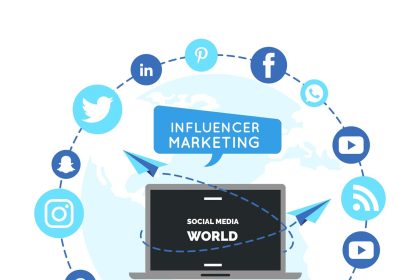Digital marketing is all about connecting with people online. Today, it’s not just about selling products or services. It’s also about showing what a brand stands for. One big trend in digital marketing is social causes. This means brands use their platforms to talk about important issues like climate change, equality, or helping communities. People, especially younger ones, care about these topics. They want brands to care too. In this article, we’ll explore why social causes matter in digital marketing, how they work, and why they’re here to stay. We’ll use real data to back it up and keep things simple.
Why Social Causes Are a Big Deal
People are paying more attention to what companies do beyond making money. They want brands to take a stand on things that matter. A study found that 88% of Gen Z (born 1997–2012) think companies should tackle social and environmental issues (Porter Novelli, 2020). That’s almost everyone in that group! It shows younger people don’t just buy stuff—they buy into what a brand believes.
Another report says 81% of people expect businesses to act on issues like climate change and inequality (Edelman, 2023). This isn’t a small thing. It’s a shift in how people see brands. They want companies to help fix problems, not just add to them.
Social media makes this huge. Platforms like Instagram, TikTok, and X let brands share their values fast. When a brand supports a cause—like cutting plastic waste or fighting for fair pay—it can reach millions instantly. If people like it, they’ll share it. That’s free marketing!
How Social Causes Help Brands Win
Supporting social causes isn’t just about looking good. It’s smart business. Here’s how it helps:
1. Builds Trust with Customers
People trust brands that care. A study showed 66% of global consumers will pay more for products from companies that support social causes (NielsenIQ, 2021). When a brand talks about real stuff—like helping kids or cutting emissions—people feel they can trust it. Trust turns into loyalty, and loyalty means more sales.
Take Patagonia. They’ve donated 1% of sales to green causes since 1985. In 2022, they gave away millions to fight climate change (Patagonia, 2023). Customers love this, and it’s why Patagonia keeps growing.
2. Stands Out in a Crowded Market
There are tons of brands online. How do you get noticed? Social causes help. When a brand ties itself to a cause, it’s not just an ad—it’s a story. Stories stick with people.
TOMS Shoes did this with their “One for One” campaign. For every pair sold, they give a pair to someone in need. By 2021, they’d donated over 100 million pairs (TOMS, 2021). This made them different from other shoe brands. People bought into helping others.
3. Connects with Younger Audiences
Young people, like Millennials and Gen Z, are driving this. A survey found 49% of Gen Z have stopped buying from brands that don’t match their values (Deloitte, 2022). They watch what brands say online. If a company ignores big issues like racism or pollution, they’ll lose these customers.
Ben & Jerry’s speaks out on racial justice and climate action. In 2020, they supported Black Lives Matter with a bold statement. Some got mad, but their fans loved it, and sales grew (Ben & Jerry’s, 2020).
Real Examples of Social Causes in Action
Here are brands doing it right:
Nike: Equality in Sports
Nike’s “Dream Crazier” campaign in 2019 focused on women in sports breaking barriers. The ad got over 28 million YouTube views in its first month (Nike, 2019). Nike used social media to spread it, and people saw a brand fighting for fairness.
Dove: Real Beauty
Dove’s “Real Beauty” campaign, started in 2004, is about loving yourself. They’ve used digital ads and social media to share this. They’ve reached millions of women with this message (Unilever, 2021). It’s not just marketing—it’s a movement.
Coca-Cola: Sustainability
Coca-Cola’s “World Without Waste” plan from 2018 aims to recycle every bottle or can they sell by 2030. They’ve collected billions of bottles so far and share updates online (Coca-Cola, 2023). People like seeing big brands take responsibility.
How to Add Social Causes to Digital Marketing
Here’s how to do it simply:
1. Pick a Cause That Fits
Choose something your brand cares about. If you sell eco-friendly bags, focus on reducing waste. If you’re a food company, maybe fight hunger. It has to feel real—people spot fakes.
2. Share It Online
Use social media to tell your story. Post videos, pictures, or updates. Tools like Canva make cool graphics easy. Keep it short and clear.
3. Partner Up
Work with groups that know the cause. Team up with a nonprofit like Charity: Water for clean water projects. It looks legit and helps you do it right.
4. Show Results
People want proof. Share numbers or stories about your impact. Planted 1,000 trees? Say it! Helped 500 families? Show it! Data builds trust.
The Numbers Don’t Lie
Here’s hard data:
- 70% of consumers would switch to a brand supporting a cause they care about (Cone Communications, 2022).
- 94% of Gen Z want companies to take a stand on social issues (DoSomething Strategic, 2023).
- Over 4.9 billion people use social media worldwide, amplifying these messages (Statista, 2023).
These numbers show social causes are necessary. Brands that ignore this risk losing customers.
Challenges to Watch Out For
It’s not all smooth:
1. Looking Fake
If a brand pretends to care just for sales, people will call it out. This is “greenwashing.” Be honest, or it’ll backfire.
2. Upsetting Some People
Not everyone agrees on causes. Supporting something like LGBTQ+ rights might lose some customers. But if it fits your brand, loyal fans might outweigh the haters.
3. Keeping It Up
You can’t just post once. People expect action over time. Coca-Cola didn’t just talk about recycling—they set goals and showed progress. It’s a long game.
The Future of Social Causes in Digital Marketing
This isn’t going away. With over 4.9 billion social media users in 2023 (Statista, 2023), the pressure on brands will grow. Experts say purpose-driven marketing will be normal by 2030 (Forrester, 2022). Tools like AI might even let brands show causes in new ways, like virtual cleanups.
Younger generations will keep pushing. They’ve grown up online, watching brands and holding them accountable. If a company doesn’t care, they’ll scroll past.
Wrapping It Up
Social causes in digital marketing are a game-changer. Brands that support real issues build trust, stand out, and connect with people who care. The data proves it: people want purpose, not just products. From Nike’s equality push to Dove’s body positivity, it works. It’s not always easy, but when done well, it’s powerful.
So, pick a cause, share it online, and show your impact. It’s not just good marketing—it’s good business.
References
Ben & Jerry’s. (2020, June 2). Silence is not an option. https://www.benjerry.com/whats-new/2020/06/silence-not-option
Coca-Cola. (2023). World without waste: 2023 progress report. https://www.coca-colacompany.com/sustainability/resource-center/world-without-waste-2023-report
Cone Communications. (2022). 2022 Cone Communications millennial CSR study. https://www.conecomm.com/research-blog/2022-millennial-csr-study
Deloitte. (2022). 2022 global Gen Z and millennial survey. https://www2.deloitte.com/global/en/pages/about-deloitte/articles/genzmillennialsurvey.html
DoSomething Strategic. (2023). Gen Z and social impact: 2023 insights. https://www.dosomething.org/us/about/strategic-insights
Edelman. (2023). 2023 Edelman trust barometer. https://www.edelman.com/trust/2023/trust-barometer
Forrester. (2022). The future of purpose-driven marketing. https://www.forrester.com/report/The-Future-Of-PurposeDriven-Marketing/RES177354
NielsenIQ. (2021). Consumers demand purpose-driven brands. https://nielseniq.com/global/en/insights/report/2021/consumers-demand-purpose-driven-brands/
Nike. (2019). Dream crazier. https://www.nike.com/womens-equality
Patagonia. (2023). 2022 environmental impact report. https://www.patagonia.com/stories/2022-environmental-impact-report/
Porter Novelli. (2020). 2020 Porter Novelli purpose tracker. https://www.porternovelli.com/research/2020-purpose-tracker/
Statista. (2023). Number of social media users worldwide. https://www.statista.com/statistics/278414/number-of-worldwide-social-network-users/
TOMS. (2021). TOMS impact report 2021. https://www.toms.com/us/impact.html
Unilever. (2021). Dove real beauty: 2021 impact report. https://www.unilever.com/brands/personal-care/dove-real-beauty-impact/















